How many times have you gone to the grocery store for one or two items and left with a whole cart full? I know it’s happened to me, more than once—and it’s definitely not good for anyone’s budget!
Grocery stores (and all stores, really) spend big bucks on researching consumer psychology and putting it into practice. It’s not just your imagination, so if you’ve fallen for these tricks, it’s not your fault. It happens to the best of us. These tricks are meant to get you to open your wallet and impulse buy.
Understanding a few of these little psychology games that supermarkets play can ensure you don’t fall for them, so you can shop smart and save big when you make your next trip to the store. Watch out for these supermarket tricks…!
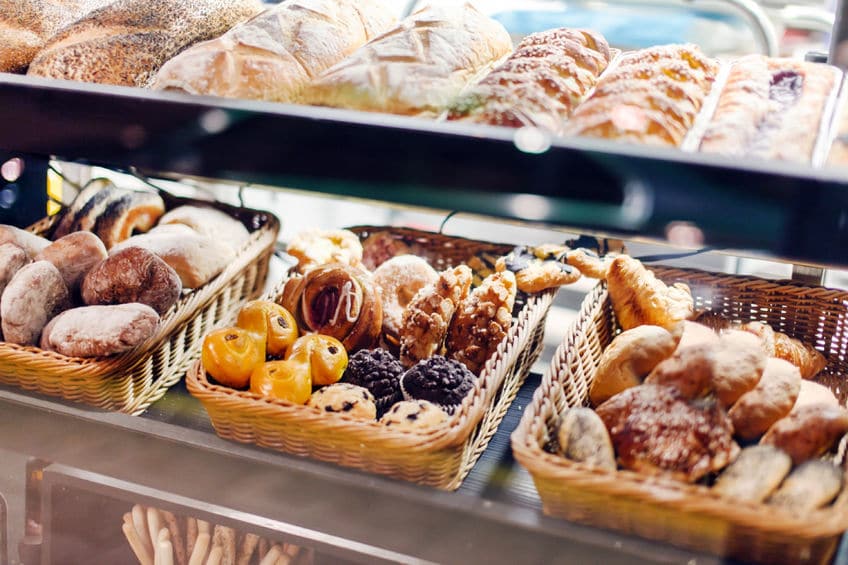
1. Delicious Smells and Sights at the Entrance
From the moment you walk into the store, the supermarket planners have worked to carefully tempt you to put more items in your cart. Often, bakery and flowers are placed right up front. You walk in the store (or even the entryway) and you’re greeted with beautiful plants and delicious looking treats. You’re in a good mood, your cart is empty, and what do you do? You add a few of these items to your cart! Rotisserie chickens and seasonal produce are also placed near the front for the same reasons. You smell that amazing smell and your salivary glands go into overdrive!
2. Big Carts
Grocery carts have grown over the last 10-20 years (just like our waistlines and portion sizes). Consumers will spend more when they have a bigger cart. Don’t fall for it! If you need only a few items, opt for a basket rather than a cart. Carrying the basket through the store will help you keep a handle on how much you’re purchasing.
As carts get bigger, aisles get smaller and narrower. The idea is that it’s more of a challenge to turn around, so you’ll naturally be led to the back of the store.
(Side note on carts: they’re rarely, if ever, cleaned off. So the next time you go in the store, use the free hand wipes to clean the handle. Who wants someone’s leaky chicken juice or sticky soda all over their hands? Or the kids’ hands?)
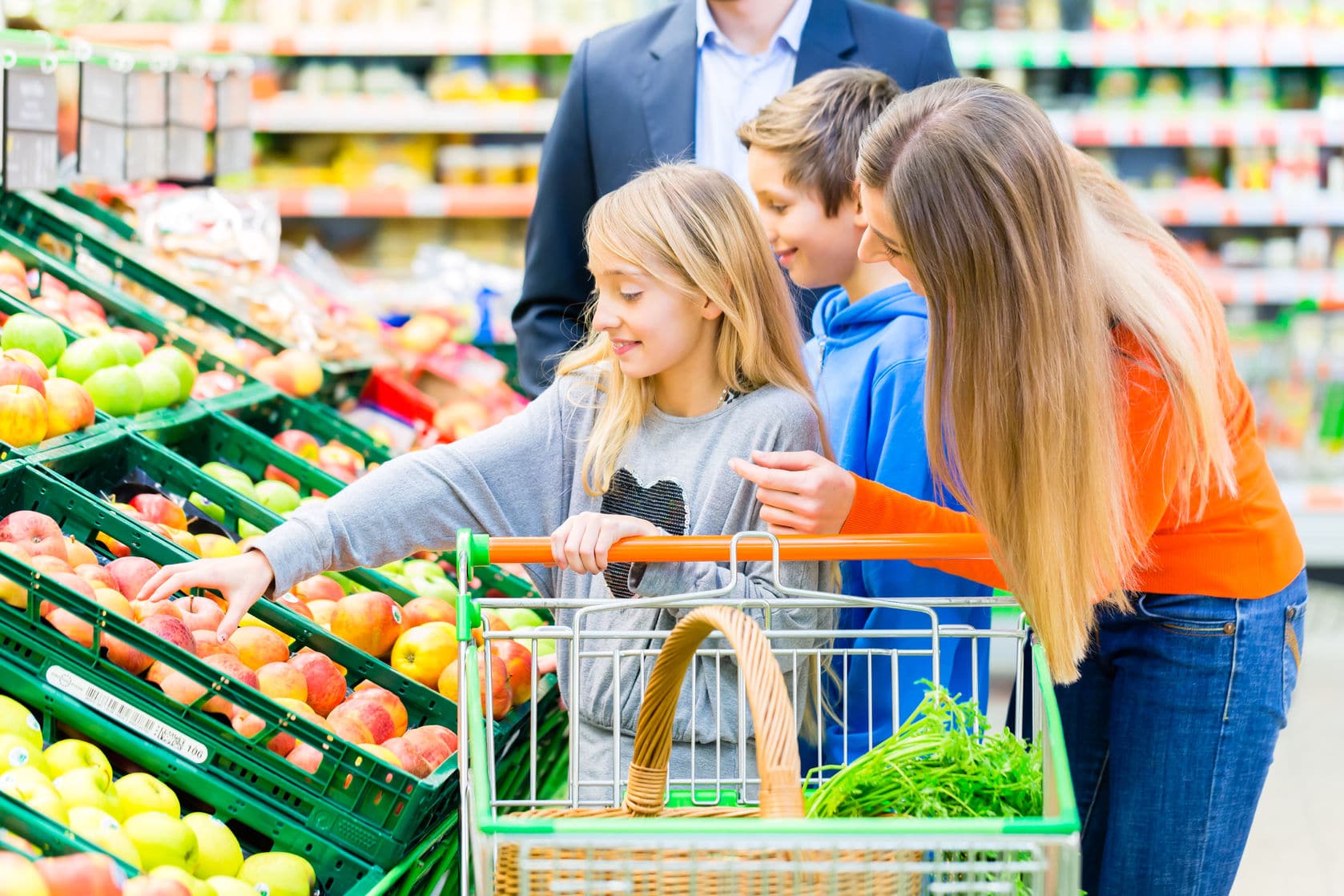
3. Produce First
There are several tricks in the produce department. The first one: produce is usually the first section you hit, right before the bakery and deli. Why is that? Well, the idea is you’ll be so proud of yourself for putting these healthy items in your cart that you’ll reward yourself by purchasing less healthy items next.
Don’t fall for it! While you should, of course, fill your cart with fresh produce, don’t deviate from your list. Pat yourself on the back in other ways—like by saving when you reach the register.
4. Glistening Produce
The next trick you’ll face in the produce section is that lovely “mist.” (I’ve even heard grocery stores play Singin’ in the Rain when the spray comes on.) What does the mist do, exactly? Well, for one thing, it actually isn’t great for the produce and can make it rot faster. It makes it glisten and look fresher, though—dewy lettuce, glowing apples, crisp carrots—they all look better sporting the “wet look.” Be sure to dry off your items when you get them home; extra moisture in the bag can make things go bad much quicker.
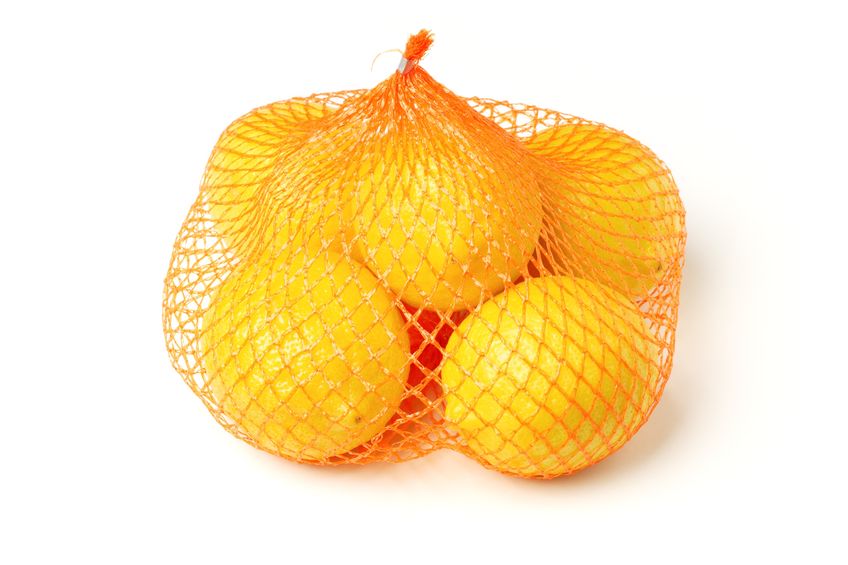
5. Pre-Cut and Packaged Produce
Another thing you’ll find in the produce department is pre-packaged fruits and veggies and pre-cut items. If you really want to save money, these items will cost you quite a bit more. Want proof? Compare “baby carrots” with regular old carrots. The price is almost half. Not to crush your fondness for baby carrots, but they’re just regular ol’ carrots cut smaller. Save money and chop produce yourself.
Bagged lettuce and pre-packaged peppers can seem like a good deal, but you’ll be able to select fresher items individually. Not only that, but you won’t end up buying four lemons, when you really only need one. Supermarkets package these items to get you to buy more, to hide blemishes and other signs of age, and because they know you’ll fork over more cash for convenience.
6. Fancy Cheeses
Now, I love a good brie or Camembert as much as the next gal, but often the cheeses in the “artisan” cheese case are priced double or triple over what you’ll find in the dairy section. For a party or get together a fancy cheese is fun, but if you’re just looking for cheddar, head back to the dairy section to save more money.
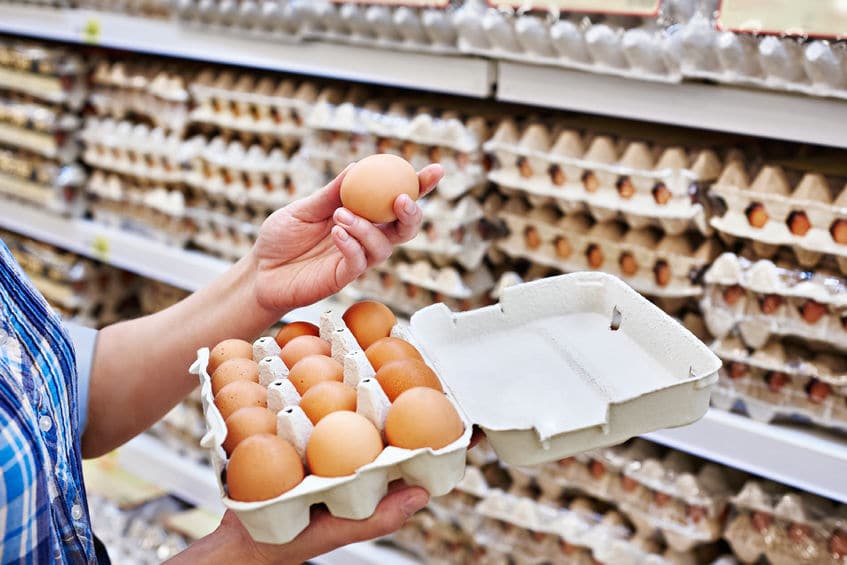
7. Dairy and Eggs in the Back
Speaking of the dairy section, have you ever wondered why it’s in the back of the store? Well, the reasons are twofold: 1. To get you to head to the back or middle of the store for essential items like milk, cheese, butter and eggs; and 2. Because when it’s unloaded off the truck, it gets these heavy items in the fridge faster.
While the food safety precaution is appreciated, don’t be distracted on your way to the dairy section! You may also notice all those delicious cookies and other yummy items that pair well with dairy located right in the dairy aisle or facing the case (lest you get to the back of the store forgetting Oreos exist).
8. Multiple New and Exciting Flavors
About those Oreos…and Doritos and salad dressings and cereals—have you ever noticed how there are SO MANY FLAVORS?! Yet, when you try them, you have to admit, they’re often pretty darned similar. Take, for example, the special holiday packages of Peppermint Oreos vs. the regular Cool Mint Oreos. The differences are subtle at best but companies know you’ll pay more for exclusive, new and different flavors.
We love variety and don’t want to miss out on the “new.” Cereals use this trick all the time: Lucky Charms offers a different shaped marshmallow or Wheaties puts a new sports star on the box. Consumers will pay more for variety. Just be sure you aren’t falling for a more expensive variation on something that’s not so exciting.
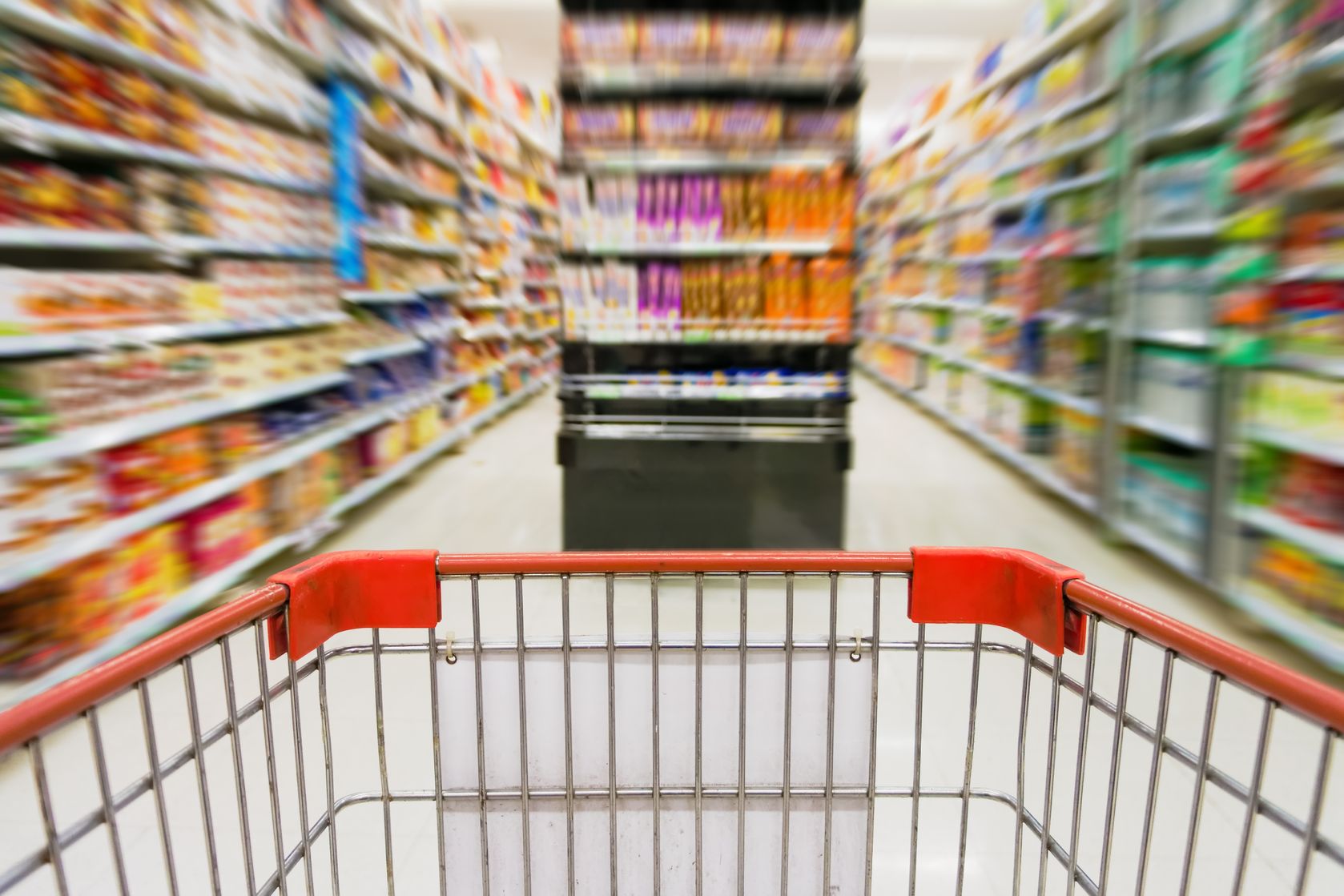
9. Expensive Items at Eye Level
Expensive, premium brands are housed at eye level to keep them in the customer’s view. The less expensive and store brands are often kept lower or higher. Keep in mind as well that children’s items like fruit snacks, cereals and animal cookies are often kept at kid-eye-level, so you can be sure to hear that constant “But, Mo-om, pleeeease?”
10. Samples, Samples, Samples
If you’ve ever been to a supermarket on sample day, you know you can easily fill up on the various treats you’re offered. There’s a certain level of commitment that happens on the part of the consumer’s psychology when they try a sample. It’s much more difficult to pass up a box of something or a new treat once you’ve earnestly been offered a taste. Samples sell products (and often items you wouldn’t have put in your cart otherwise).
It also goes back to the “new” and “exciting” selling point that attracts consumers. We all love to be the first to discover a new treat or bring home something different for our families. By trying a sample of a new flavor of yogurt or ice cream, we feel a certain obligation to then bring it home to share.
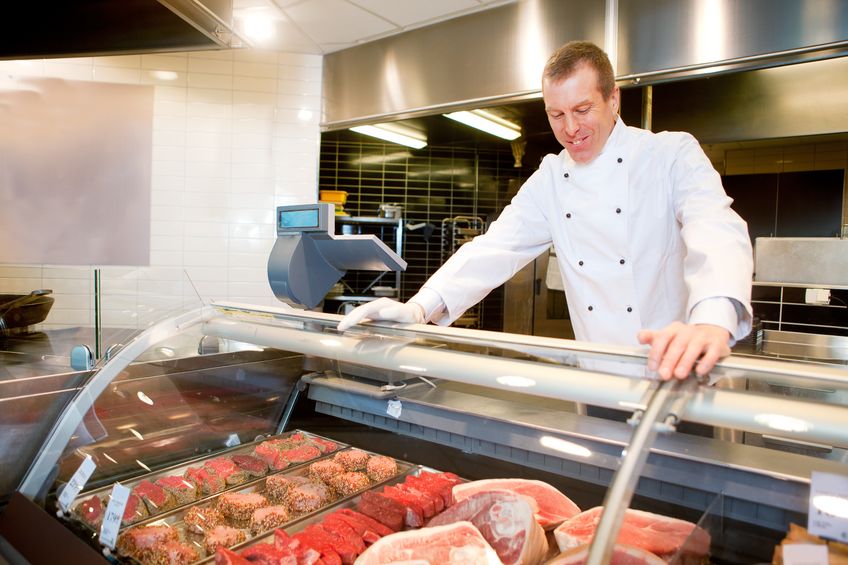
11. Premium Selections at the Deli, Meat & Fish Counters
Purchasing items at the meat and deli counter often costs a premium and doesn’t necessarily mean a fresher or better product. Meat, and fish in the frozen section are almost identical to what you would receive at the counter, but you’re paying for the ability to make a selection.
What’s more, look at the fine print in the fish case. Often, the fish is marked “previously frozen” which means you actually need to use it up right away, as opposed to fish that’s still frozen in the freezer section (and was probably fresher at time of freezing).
12. Bulk Items that Aren’t a Bargain
Purchasing items in bulk seems like it’s always a better deal…and grocery stores know that and use it to their benefit. Sometimes those bigger packages aren’t actually saving you money and they’ll end up going bad before your family can use them up.
On the bottom of each sticker, there’s often a unit price (price per ounce or unit of measure). Compare the unit prices of items to see if you’re really saving money. You might be surprised to discover the family-sized bag isn’t always the best bargain. This also goes for warehouse stores as well—so shop smart to make sure you’re really saving on your big purchases.
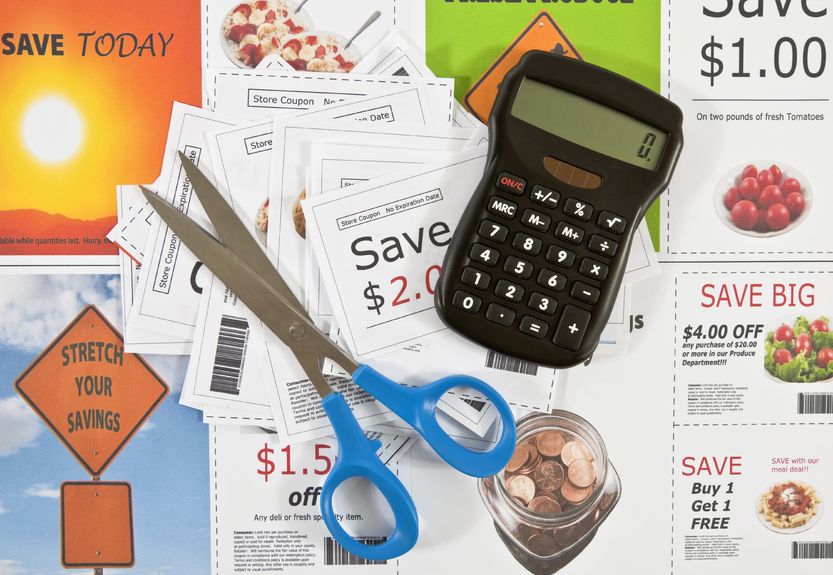
13. Tricky Coupons and Offers
Supermarkets know customers can’t resist a sale or a bargain. So, what happens? Often, they mark items UP before marking them down. Many of the items advertised in the weekly circulars aren’t actually big savings items. This is when it’s time to consult your Rock Bottom Price List and compare to see if you’re really saving.
Similarly, coupons and offers of “buy one, get one 50% off” or coupons that have to be combined with other offers can be tricky to use. Some higher-end brands are more expensive than store brands, even with a coupon. Also, be cautious to read all the fine print on a coupon and be sure you’re purchasing items your family will actually like and use. Use smart coupon strategies to stretch your dollars.
14. Changing Layouts
I don’t know about your grocery store, but mine remodels and changes item locations…often. There’s a reason behind this. Markets know that if you get too comfortable with your shopping trip you won’t have to search for your preferred items. If you don’t search for your items, you might not get drawn into impulse buys—so they keep you looking.
Aisles are long and hard to maneuver if you want to turn back because they want you to walk aisles in their entirety. They also add end caps filled with seasonal items (think canned green beans, fried onions and cream of mushroom soup at Thanksgiving; or condiments and tail-gating goodies during the summer). These end-caps aren’t selected because they’re great prices (or often even on sale at all). They’re selected because they’ll get your attention.
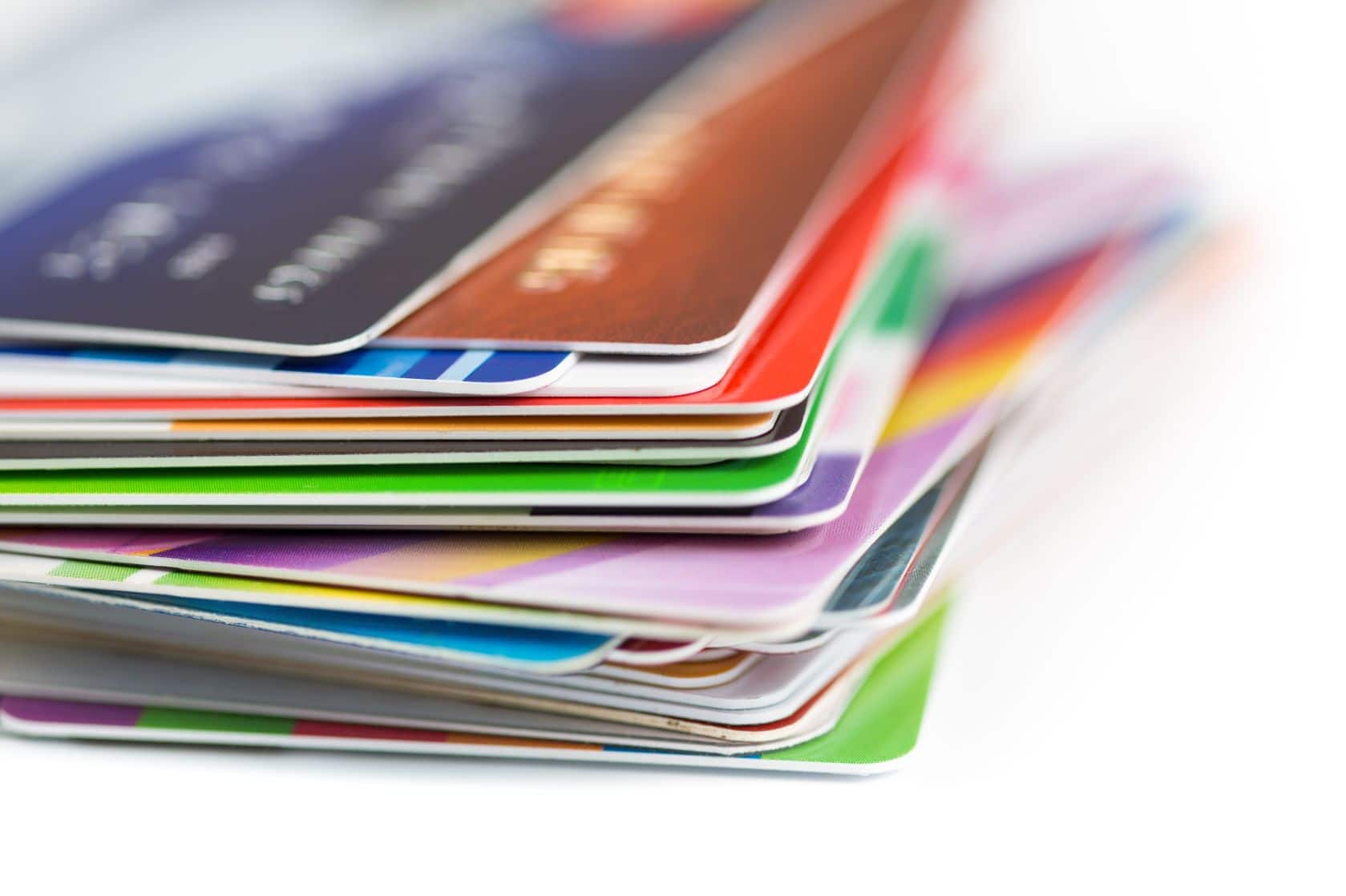
15. Getting You to Join their Club
Club cards and savings cards are pretty much the norm at supermarkets these days. They often have savings attached to them, but they’re also valuable resources supermarkets can use to analyze your spending habits, note items that are selling together, and target various demographics.
This consumer data adds a valuable layer to their market research and tells stores what they need to know about their shoppers. These club-exclusive offers also draw customers in by helping them believe they’re getting unique and special offers or saving more by joining.
16. Unclear and Tricky Signage
How often have you seen signs between two items (usually one regular-sized and one slightly larger) and been unsure about which item was on sale? Stores can make signage unclear so customers will pick up an item and forget to watch for the sale by the time they get to the checkout counter.
Most of us don’t write down prices or remember the shelf sticker for everything we buy, so by the time we get to the checkout, it can be hard to recall or even notice when your sale price doesn’t come up. If you do notice something, though, it can be worth it to speak up. Many cashiers will give you the sale price if the sign is confusing or the adjustment is under a certain amount.
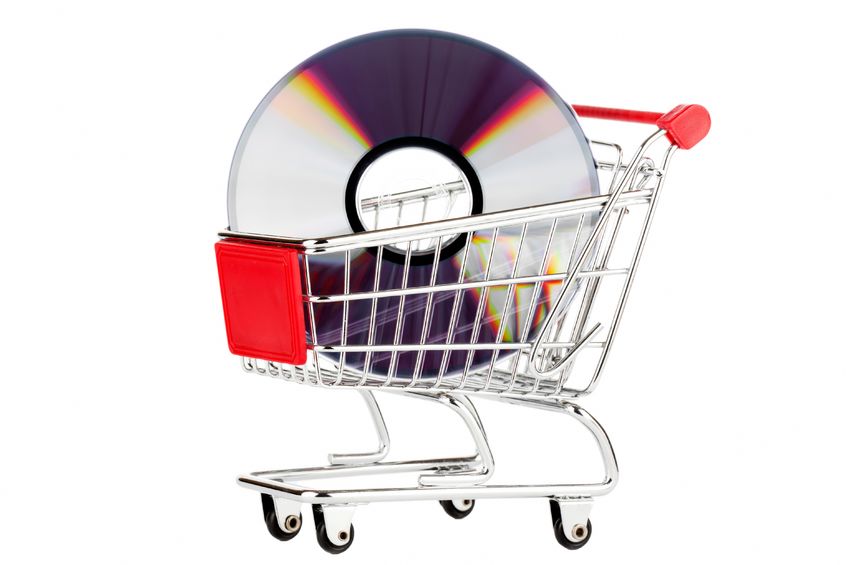
17. Slow Muzak
Grocery stores often use music to train our senses into relaxing and taking our time. If you listen to upbeat jazzy music, you’re more liable to move quickly through the store and miss a chance to fill your cart. Slow, familiar pop favorites or instrumental music causes consumers to zone out and shop along to the music.
18. Sales on Multiples
Did you realize that when sales say “10 for $10” or “2 for $5” you often can buy just one for the sale price (rather than 10)? Look at the fine print on the sign, and unless it specifies that you must buy all the items to qualify for the sale price, you don’t need to buy the “suggested amount.”
Stores know most people will simply buy the number of items the sign suggests, which might be more than you actually need. Also, use caution and check your Rock Bottom Price List to compare. If a normal price is .89, or 5 for $5, you’re not saving a thing.
19. Using 99 Cent Pricing
Retailers have known for years consumers gravitate toward $.99 pricing. Think of the last time you saw an item priced at an even amount—like $3.00 as opposed to $2.99. That one-cent tricks our brains into thinking we’re paying a dollar less for the item. It’s an old trick, but one that retailers use time and time again because it works.
Even stranger, given two items, one at $1.99 and one at $2.09, we often feel we’re saving much more on the first item than just $.10. So, an item that’s just slightly marked down appears to be a much better deal than it actually is.
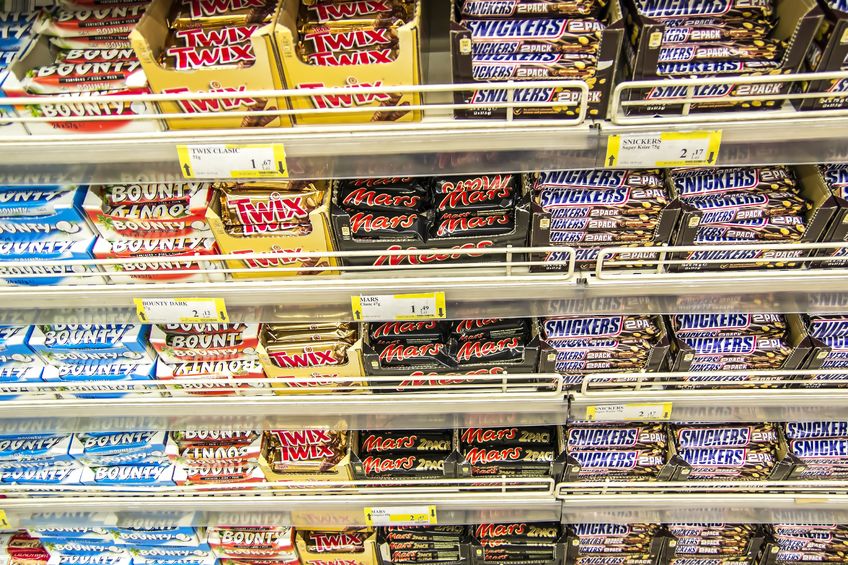
20. Impulse Buys at the Checkout
If you’ve made it all the way through the store with the integrity of your list still intact, you may have to stifle the urge to reward yourself with a soda, candy bar, magazine or gum once you hit the cash registers. There’s a reason stores put these items right at the checkout. They’re rarely on sale and they’re often lower priced luxury items and treats we feel we need to “reward” ourselves by purchasing.
Going to the store with a strong list in hand and committing to saving on food by sticking to your plan will keep you on track. Watch out for supermarket tricks, and make sure you aren’t hungry when you make your trip. Watch for subtle ways grocery stores try to tempt you into spending more—and RESIST! You can do it!
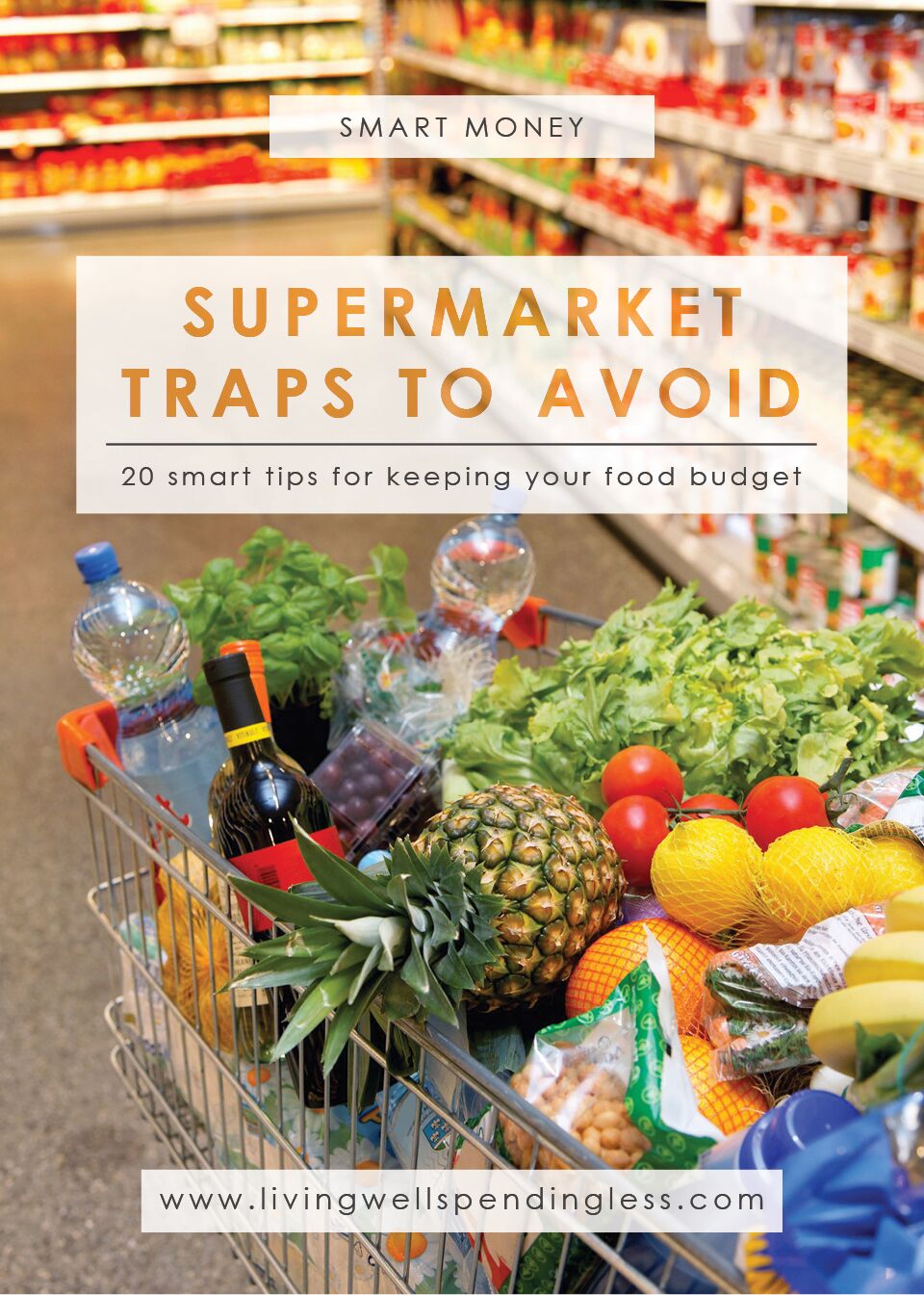
TAKE BACK CONTROL OF YOUR HOME LIFE
 Ever feel like you just can't keep up? Our Living Well Starter Guide will show you how to start streamlining your life in just 3 simple steps. It's a game changer--get it free for a limited time!
Ever feel like you just can't keep up? Our Living Well Starter Guide will show you how to start streamlining your life in just 3 simple steps. It's a game changer--get it free for a limited time!
If you love this resource, be sure to check out our digital library of helpful tools and resources for cleaning faster, taking control of your budget, organizing your schedule, and getting food on the table easier than ever before.

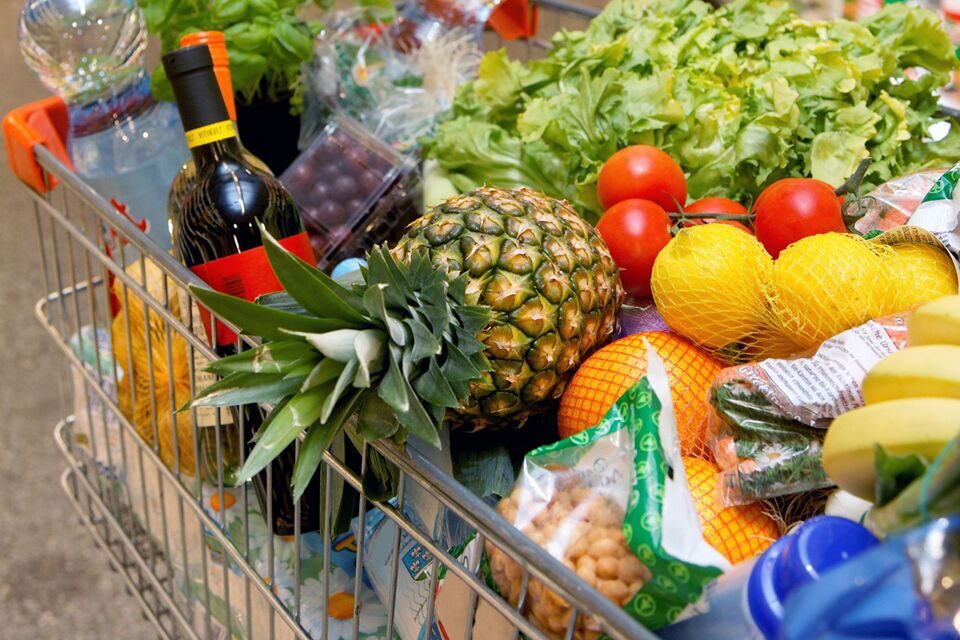
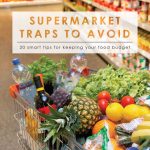


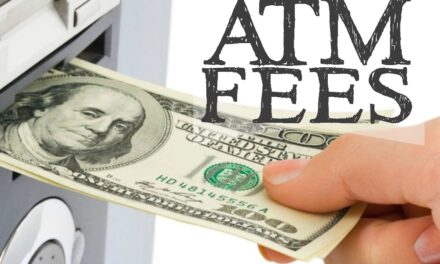


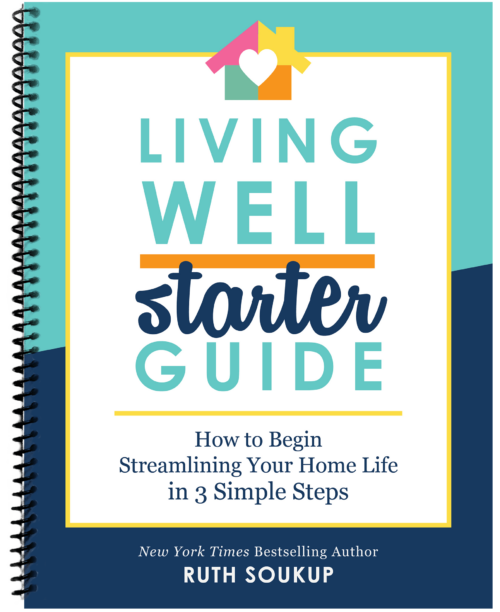

I can definitely relate to this list as the grocery stores in the UK are just as bad.
I’ve been caught out many a time in the bakery section as I’ve got a real weakness for cookies! I try never to go shopping when I’m hungry now to rein myself in!
I am a senior citizen, and a widow and find it frustrating that so many grocery stores have items on sale that says you MUST buy 3 or 5 of them to get the sale price. They also will group several items in a Section that you can mix and match but you MUST buy 5 to get the price reduction! First, as a single person I usually can’t consume the product before it spoils. Second, I don’t have space to store the items. Third, I don’t want to spend money for something that will spoil. This happens a lot for purchasing Pepsi. The cans leak when kept too long, and one even completely evaporated and I didn’t even see any hole! I’m sure I’m not the only person who would like to see Sale Papers with just the sale price without trying to figure what I need to buy, and how many to get the sale price! Is it the grocery store who does this, or the one who produces the item?
You made a good point to just carry a supermarket basket instead of the usual big cart of you’re only going to buy a few items in the supermarket. Carrying a basket means fewer items you can store and at the same time will let you control your expenses. You certainly wouldn’t want to overspend your budget. I’ll make sure to keep this in mind the next time I go to the grocery. Thanks.